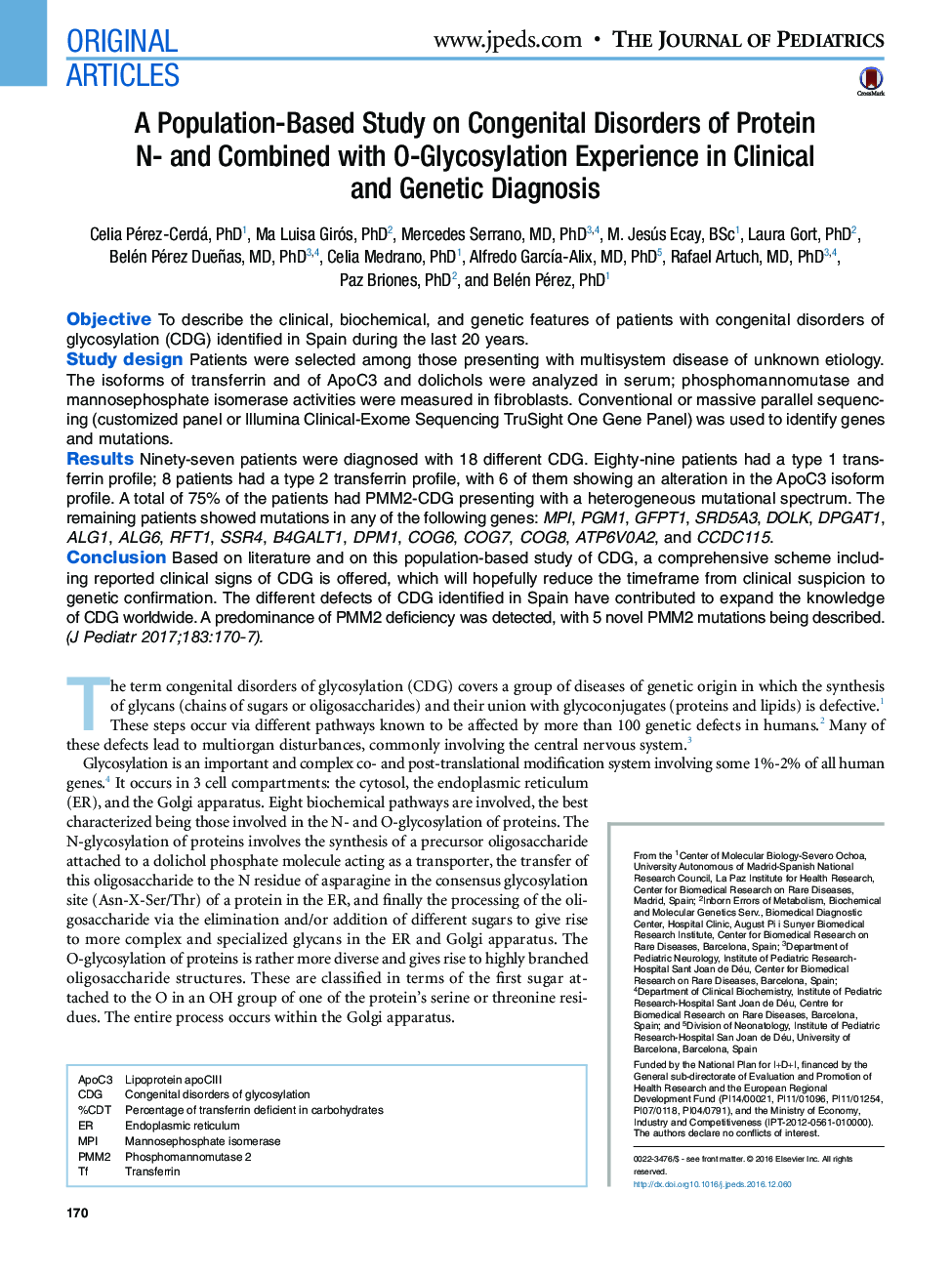| Article ID | Journal | Published Year | Pages | File Type |
|---|---|---|---|---|
| 5719400 | The Journal of Pediatrics | 2017 | 9 Pages |
ObjectiveTo describe the clinical, biochemical, and genetic features of patients with congenital disorders of glycosylation (CDG) identified in Spain during the last 20 years.Study designPatients were selected among those presenting with multisystem disease of unknown etiology. The isoforms of transferrin and of ApoC3 and dolichols were analyzed in serum; phosphomannomutase and mannosephosphate isomerase activities were measured in fibroblasts. Conventional or massive parallel sequencing (customized panel or Illumina Clinical-Exome Sequencing TruSight One Gene Panel) was used to identify genes and mutations.ResultsNinety-seven patients were diagnosed with 18 different CDG. Eighty-nine patients had a type 1 transferrin profile; 8 patients had a type 2 transferrin profile, with 6 of them showing an alteration in the ApoC3 isoform profile. A total of 75% of the patients had PMM2-CDG presenting with a heterogeneous mutational spectrum. The remaining patients showed mutations in any of the following genes: MPI, PGM1, GFPT1, SRD5A3, DOLK, DPGAT1, ALG1, ALG6, RFT1, SSR4, B4GALT1, DPM1, COG6, COG7, COG8, ATP6V0A2, and CCDC115.ConclusionBased on literature and on this population-based study of CDG, a comprehensive scheme including reported clinical signs of CDG is offered, which will hopefully reduce the timeframe from clinical suspicion to genetic confirmation. The different defects of CDG identified in Spain have contributed to expand the knowledge of CDG worldwide. A predominance of PMM2 deficiency was detected, with 5 novel PMM2 mutations being described.
